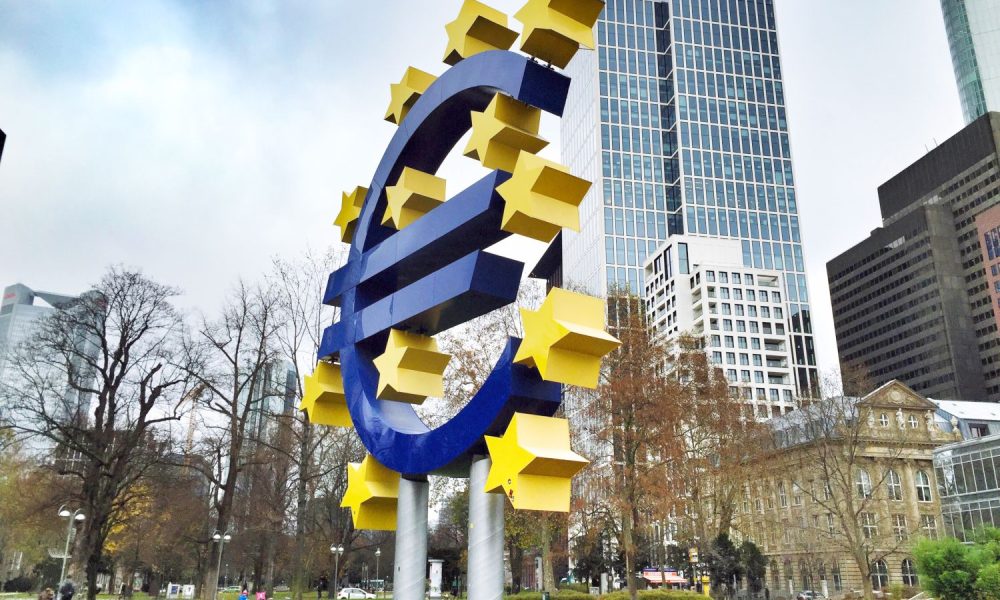
Euro signs in the Frankfurt banking district (Photo: Freepik, Eyeem)
If the European Central Bank or the US Federal Reserve fed adapt to the key interest rate, the financial world listens. But what is actually behind it – and how do these decisions influence our savings, loans and investments? This guide explains what savers and investors need to know.
What is a central bank – and what are key interest rates?
The Central bank is the heart of the monetary system. It controls a country’s monetary policy, for example the European Central Bank (ECB) for the euro. Your most important tool: the Key interest rate. This is the interest rate to which commercial banks can borrow or invest money at the central bank.
In the euro area If the Insert interest ratewith which banks can deposit money from the ECB, as a leisure interest (2025). There are 2 other interest rates with which the ECB controls monetary policy. Sometimes all 3 are referred to as “the key interest”.
How and why does the central bank change the key interest rate?
Central banks pursue a goal: Price stability. If inflation increases too much, the key interest rate is increased – loans become more expensive, the economy slow down, prices are falling. On the other hand, threatens a recession, lower the key interest rate to promote investments and consumption. The decision usually falls in regular sessionsbased on economic data, inflation and forecasts.
Effects on different investments and savings forms
Shares
If the key interest rate drops, shares usually benefit. Loans are cheaper, companies invest more, profits increase – this inspires the courses. If the interest rates, this can brake the stock exchanges.
Bonds
Falling key interest rates leave the courses of existing Bonds rise because their interest rates remain more attractive. Rising key interest rates drop the courses of existing bonds because their interest rate level becomes more unattractive. New bonds offer higher cupons and are traded.
property
Low interest rates make construction loans cheaper, real estate becomes more desirable. More expensive interest Building financingThe demand drops, prices could stagnate or fall.
Fixed deposits and overnight money
In the case of falling key interest rates, savings products such as Daily and fixed deposits more unattractive, interest rates are falling quickly. If the key interest rate rises, the savings interest usually increase – but often with a delay.
More investments
Gold, raw materials or foreign currencies are also responding to changes in the lead. A low key interest rate can tend to weaken the currency, since investors are looking for alternatives abroad for more reduction in return.
What should investors and savers consider in key interest rates?
If you put on money or plan a loan, you should keep an eye on the Lezins decisions.
- Before an expected interest rate reduction: Secure longer fixed deposits, buy bonds with an attractive cupon, wait with real estate financing.
- Before an expected rate increase: Compare overnight money offers, complete loans as possible at low interest rates, observe stock markets.
Options for action after the decision:
- For falling interest: Keep existing fixed money, check new bonds, observe equity and real estate markets.
- With rising interest rates: Compare savings interest rates, refuse in daily or fixed deposits, prefer bonds with a short term, prefer credit requirements.
Table: Leist interest sinks – effects and tips
| Annex/savings form | impact | Tip for investors/savers |
|---|---|---|
| Condition/fixed deposit | Interest | Now secure longer terms |
| Bonds | Courses climb | Invest in existing bonds |
| Shares | Courses often on the upswing | Check/increase stock quota |
| property | Credit cheaper, demand increases | Check financing, consider buying |
| Loan | Interest | Reconuate new loans |
| Foreign currencies | Euro weaker | Export -oriented companies benefit |
Table: Key interest rises – effects and tips
| Annex/savings form | impact | Tip for investors/savers |
|---|---|---|
| Condition/fixed deposit | Interest rises (partly delayed) | Compare offersshepher off |
| Bonds | Courses fall | Prefer short terms |
| Shares | Courses often under pressure | Check stock quota, act defensively |
| property | Credit expensive, demand decreases | Weigh well, secure financing |
| Loan | Interest rises | Prefer credit requirement |
| Foreign currencies | Euro stronger | Import -oriented companies benefit |
Conclusion: what key interest rates mean for investors
Key interest is the clock for savers and investors. Anyone who keeps a look at the decisions of the central banks can react cleverly: secure runtime when it comes to reducing interest, remain flexible for interest rate increases. Diversification remains the be -all and end -all – because every form of investment reacts differently. Those who stay informed make their money more.
Sources and further information: www.bundesfinanzministerium.de, www.liqid.de,, biallo.de,, Profinance.de
Disclaimer:
All information without guarantee for completeness, correctness and topicality. The text does not represent a trade recommendation or investment advice.
